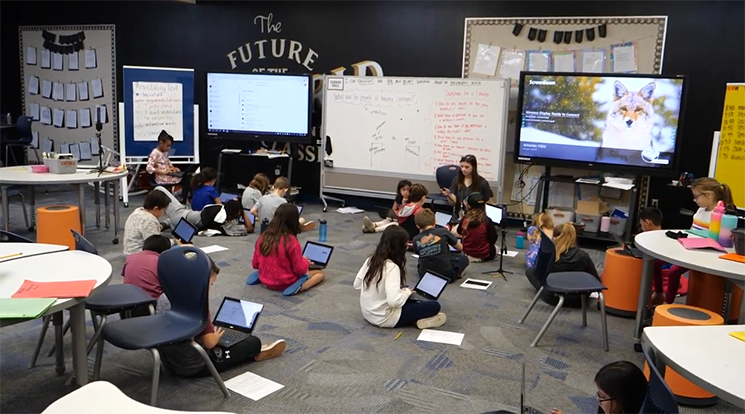Networked cohorts inspire, support new models for schooling

When you picture team teaching, do you see six adults — three certified teachers, one teacher candidate and one instructional assistant — plus additional support from a special education team supporting a group of 60 or 70 multi-age learners? That’s the case at The Creighton Academy, a K–6 school in Phoenix, Arizona.
Do you see multi-age learning communities called houses, made up of 85 students in grades 4–6, guided by an educator team? That’s the innovation that’s allowing Whittier Elementary School in Mesa, Arizona, to deepen and personalize learning for its students.
Do you see dynamic learning spaces that can be configured for collaborative, project-based learning activities? That’s SPARK School within Kyrene de las Manitas Elementary School in Tempe, Arizona.
Working in partnership with the Next Education Workforce initiative at ASU’s Mary Lou Fulton Teachers College, each school is working toward — or has launched — new models of schooling that replace and improve upon the traditional one-teacher, one-classroom model. Hundreds of educators found support for this work and resources through Next Education Workforce networked cohorts, a collaborative learning community that supports schools and teams of educators transitioning to Next Education Workforce teaming models. MLFTC launched the first elementary education networked cohort with 30 educators last fall and quickly expanded it to include 200 educators across five cohorts this past spring.
“The networked cohort was so valuable for me because it allowed me and my colleagues the opportunity to learn from other schools and teams that are working toward full implementation of a Next Education Workforce model,” says Samantha Rodis, an instructional coach for K–6 teachers in Creighton’s multi-age, dual-language, project-based, open learning environment. “When you are trying something new, it can be exciting, but it can also be isolating. It was so empowering and encouraging to hear about others who were having similar experiences and working through similar challenges.”
The cohort allowed Rodis to learn about different methods of inquiry instruction. Her team focused on project-based learning and was able to fully implement three project-based learning units over the course of the year. They also spent time refining and reflecting on their practice because of what they learned from others in the cohort, Rodis says.
At SPARK School, an educator team focused on incorporating more math into its quarter-long projects. “Some of the other teams in our networked cohort shared ideas on how to embed math into projects and we took inspiration from those ideas,” says Zoe Glover, a 3rd–5th grade teacher at SPARK who teaches English Language Arts and supports co-planning and teaching science and social studies through project-based learning. The cohort came at a perfect time, considering the 2020–21 school year was her first as a certified teacher and allowed her to connect with experienced educators “during a really challenging year.”
Meanwhile, Michelle Oh, a 4th–6th grade math teacher at Whittier Elementary, says her team found inspiration from ideas shared at SPARK School. “They discuss levels of autonomy with their students and we hope to implement something similar, perhaps modified from our district's ‘Portrait of a Graduate,’” she says.
Oh says she’s inspired by the different ways other schools immerse their students in inquiry: “It was a great opportunity because it provided a springboard of ideas for our team to try and reflect on.”
That’s especially important as educator teams navigate COVID-19 safety protocols, says Oh. Creating houses at Whittier “was a very daunting thing to do, especially with the constraints of pandemic policies. Through the networked cohort opportunities, our team of teachers was able to gain insight and practical solutions from other teachers who were diving into personalized learning in a different way.”
Jen Lamanna, principal of Sousa Elementary in Mesa, Arizona, agreed. “The networked cohort was extremely valuable to the Sousa team. ... Our team took ideas from other teams, made them their own, and rolled them out to students creating personalized learning experiences.”
Inspired by another team, Sousa educators tried out a “wonder wall” project that led to a new free inquiry project for 1st-graders. “The students started with an ‘I wonder’ statement and then went through the design process to find the answer,” Lamanna says.
This fall, Sousa plans to expand with a multi-age team of both 1st- and 2nd-grade students. Lamanna credits the cohort for the school’s strides toward deeper and personalized learning for students: “The networked cohort has been the most valuable and productive learning we have done to move toward personalized learning at Sousa. The relationships we have cultivated and support from ASU are transforming our school.”